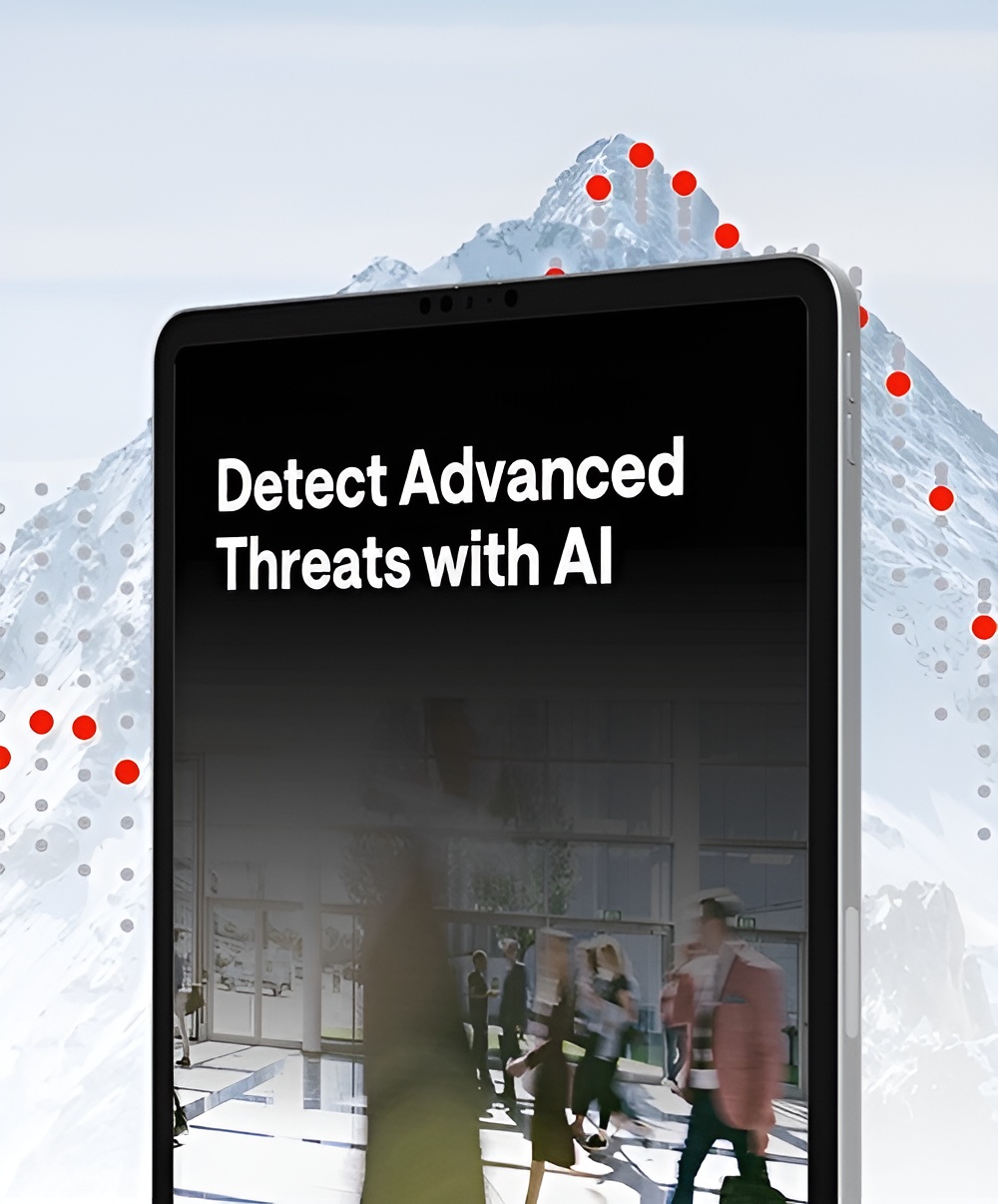Zero Trust Implementation
Exeon enables effective Zero Trust strategies using metadata and machine learning for comprehensive network security, detecting APTs and insider threats with 100% data privacy.

The roadblocks to proper security
of organizations have adopted Zero Trust principles for their security today.
or more of these fail to realize the benefits, as reported by Gartner®.
of breaches involve compromised credentials. ZT eliminates implicit trust, ensuring strict authentication and least privilege access.
Appropriate network path visibility in a complete Zero Trust environment is a major challenge, especially when hundreds of clients attempt to access development servers over the internet, making path visibility essential.
Rapid anomaly monitoring
Machine learning models inspect each flow extremely fast, flagging beaconing, data exfiltration and privilege abuse—even inside encrypted traffic.
Seamless integration
Exeon.NDR plugs straight into monitoring of your Zero Trust agents, providing a holistic overview from log to service, without agent deployment.
Efficient deployment
Agent-free sensors install during normal change windows and scale across on-prem, multicloud and MSSP-managed estates—no forklift upgrades, no downtime.
Real-time application traffic monitoring
Real-time visibility into application-specific logs and improved SaaS and critical applications security. Detecting anomalies such as brute force logins, impossible access scenarios, and data exfiltration attempts without compromising user experience.
Unified IT/OT network monitoring
Near real-time correlation of critical business systems and the network activity provides you with complete IT/OT visibility. In Zero Trust OT environments, Exeon.NDR supports micro-segmented network cells as much as during migration to these.
Detect threats before damage is done
We use advanced behavioral analytics to identify potential threats, including lateral movement and insider threats. By continuously analyzing network traffic and device behavior, Exeon provides organizations with actionable intelligence to mitigate risk immediately. AI-powered anomaly detection ensures threats are identified and addressed before they escalate, reducing downtime and preventing data breaches.
Enhanced threat response
Exeon.NDR, as well as Exeon.UEBA, enhance the existing reporting and response infrastructure by providing high-fidelity threats on Zero Trust networks as soon as they are identified to SOAR solutions, and therefore trigger appropriate defensive reaction.
Trusted by critical infrastructures and institutions globally
















How it works
See every packet
Exeon streams flow telemetry from data-centre, cloud and OT networks, discovering all assets and closing the visibility gap that stalls most Zero Trust roll-outs.
Validate least privilege
Traffic analytics reveal which services actually talk to each other. With one click, you can see the traffic within your OT micro-segments or get specific overviews on your SaaS solution and potentially misleading traffic.
Monitor and adapt 24/7
Self-learning models watch behaviour in real-time and raise high-fidelity alerts if a policy is breached or a service starts to behave abnormally. Automated SOAR hooks can quarantine the offender in seconds.
Exeon in action
Here’s how organizations secure their networks with Exeon.NDR—real-time visibility, least privilege access, and continuous detection across all environments.

Guided threat detection tour

NIS2, DORA & KRITIS Guide

Zero Trust in the finance sector

AI against advanced threats
How we make security teams better
Our customers prioritize protecting their sensitive data and exposed IT and cloud infrastructure. We provide them with the confidence they need.

CISO, SWISS International Airlines
“As the Swiss national airline, we are driven by a passion for exceptional performance, in the spirit of our guiding principles. A stable and secure IT is the most important basis for an excellent customer service. For the security of SWISS IT, we use Exeon as a central cybersecurity tool, fully managed by our long-term partner Reist Telecom AG. A perfect combination and solution to monitor our network and quickly detect any kind of anomalies.”

CEO & Founder, Planzer
“As CEO and owner of a fast moving, international logistics company, I cannot afford any system interruptions due to cyber incidents. With Exeon.NDR, we have found a Swiss solution to monitor our network and quickly detect cyber threats.”

Head Infrastructure & Applications, 3 Banken IT
“We especially appreciate the comprehensive network visibility that Exeon.NDR offers us.
The anomaly detection is also extremely accurate and allows our analysts to focus on the essential threats.”

ICT Project Leader, WinGD
“Exeon provides us with complete visibility of our network data flows and automatically detects suspicious behavior. Thanks to their AI algorithms, we immediately identify potential cyber threats and can respond quickly and efficiently. This way, we prevent attackers from moving undetected in our systems, infiltrating the infrastructure, or bypassing existing security measures.”

Senior Product Portfolio Manager Cyber Defense, Swisscom
“Exeon offers numerous functional advantages over competing NDR products. With Exeon, we have the ability to leverage innovative technologies and advanced analytics to provide our customers with a best-in-class security solution. Together, we are committed to improving the security landscape.”

CEO, Real Security
“As leading distributors, we’re always on the lookout for reliable, innovative, and powerful solutions to strengthen our portfolio and shape the future of cybersecurity. Exeon has proven time and again to be a trustworthy and easy-to-work-with partner. Their solution, exeon.ndr, has already made a big impact across various sectors.”

CEO, EnBW Cyber Security
“We are looking for European, data protection-compliant solutions that are quickly implementable and AI-based. Exeon, as a Swiss company, is ideal for us because the tool is easy for our analysts to use and continuously learns. These advantages led to our decision regarding Exeon.”

CEO, Ensec
“For us as a managed security service provider, a reliable, fast and highly automated NDR solution like Exeon.NDR is the key to long-term and satisfied customer relationships. We are therefore delighted to partner with the Exeon team.”

CEO, RAS Infotech Limited
“After a comprehensive evaluation of various NDR technologies, we observed that most vendors rely heavily on collecting data from SPAN ports, which felt like searching for a needle in a haystack. However, Exeon.NDR stood out with its future-proof strategy that leverages metadata analysis, eliminating the need for traffic mirroring. This approach not only simplifies the process but also allows us to gather information from various branch switches, providing a 360-degree view of security threats across our network. Consequently, we decided to move forward with Exeon.NDR.”

Head IT Security, PostFinance AG
“PostFinance has chosen Exeon.NDR because of its open and future-proof architecture. Not needing any hardware sensors and being able to control data flows, we didn’t have to make any significant changes to our existing infrastructure. We are also convinced by the cooperation with the competent and technically outstanding Exeon team.”
Further solutions

Hybrid & Multi-Cloud Enhancement
Exeon gives you deep visibility into network behavior across cloud and on-prem environments — surfacing hidden threats and suspicious activity that may bypass traditional tools.
- Real-time monitoring of network flows across all platforms & environments.
- Automated threat hunting and incident response.
- Seamless integration with EDR, XDR, SOAR, and IPS systems.

Compliance
Complex, new regulatory compliance is alleviated with Exeon’s “data privacy first” solution on-prem, in the cloud, or sensitive air-gapped networks.
- Enhances compliance by providing full network visibility, anomaly detection, and the context needed for reporting and integration with SOAR playbooks.
- Enables data sovereignity for end customers as everything is processed within end customer premises.
- Ensures adherence to NIS2, ISO 27001, and more.

IT Security Monitoring
State-of-the-art threat detection, real-time visibility, and AI-driven analytics to protect your network, applications, and cloud environments from attacks.
- Seamless multi-cloud and hybrid integration.
- AI & ML to detect anomalies and assess future risks.
- High alert fidelity reporting to reduce alert fatigue and workload.

Insider Threat Management
A multi-layered approach to detect and mitigate insider threats by leveraging AI-powered Network Detection and user entity and behavior analytics.
- Comprehensive monitoring for the entire network and application visibility.
- Zero Trust integration to validate strict access controls.
- Real-time security insights via live dashboards.
Industry-focused use cases

Zero Trust in the finance sector
Support DORA compliance, while also eliminating inherent trust in networks by enforcing continuous identity verification, limiting access to critical assets & more.

Meeting the unique needs of OT
Effective OT security, as part of a Zero Trust strategy, must ensure visibility over all OT assets, protection against sophisticated threats, compliance & more.

From patient data to regulatory compliance
By enforcing strict access controls, audit logs, and real-time monitoring, Zero Trust helps healthcare providers meet data security requirements—and much more.
Frequently asked questions
Zero Trust applied to real-life scenarios: effective OT security, eliminating inherent trust in networks by enforcing continuous identity verification, limiting access to critical assets & more.
How can organizations balance Zero Trust with operational efficiency?
Implementing Zero Trust doesn’t mean sacrificing efficiency. By integrating ML-driven NDR solutions, organizations can automate threat detection, reduce false positives, and streamline incident response. This also ensures that only verified users and devices access resources, reducing unnecessary disruptions.
How can organizations address identity theft and metadata spoofing under Zero Trust?
While identity and access management (IAM) is a key component of Zero Trust, it must be paired with advanced tools like NDR. These tools analyze and detect inconsistencies, and identify suspicious patterns, such as unusual login behavior or lateral network movement to mitigate risks from identity theft and spoofed access attempts.
How does Zero Trust address lateral movement in cyberattacks?
Zero Trust minimizes lateral movement by restricting access to the essentials and continuously verifying user and device activity. Tools like NDR monitor internal network traffic and detect reconnaissance activities or attempts to escalate privileges, ensuring that attackers cannot freely navigate within the network.
Why is Zero Trust critical for securing OT environments?
As OT networks become connected to IT and the cloud, they face increased exposure to cyber threats. Zero Trust ensures continuous identity verification, minimal access, and dynamic adjustments to mitigate risks in these converged environments. NDR supports Zero Trust through continuous monitoring, asset segmentation, and proactive protection of your OT environments.
What challenges arise when implementing Zero Trust in OT environments?
Implementing Zero Trust in OT environments is complicated by legacy systems, static configurations, and compatibility issues. Ensuring security without disrupting safety-critical functions requires solutions like NDR that adapt to these unique challenges.
Why is integrating Zero Trust critical for DORA and NIS2 compliance?
Zero Trust minimizes attack vectors and improves data flow control by treating every access request as untrusted. For financial institutions, integrating Zero Trust with tools like NDR ensures compliance by safeguarding critical systems, enabling micro-level security, and maintaining continuous monitoring of assets.
Let’s talk Zero Trust and NDR
Exeon is revolutionizing Network Detection and Response (NDR) by enabling organizations to implement Zero Trust strategies effectively.


